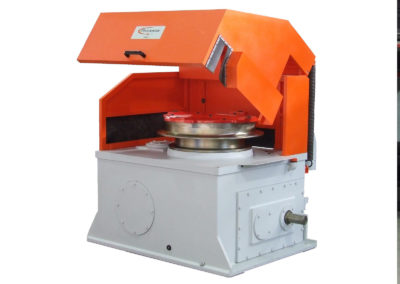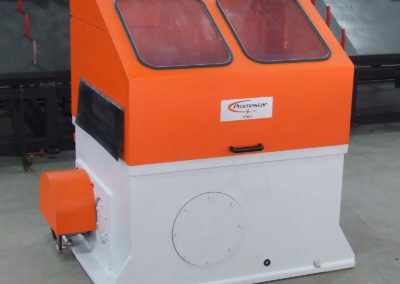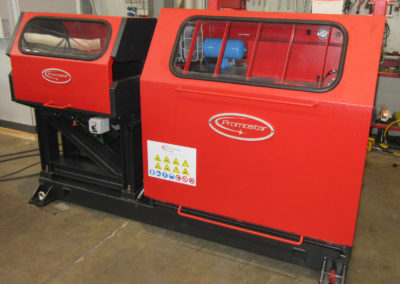Pulling Bull Blocks
pulling bull blocks
General description
Pulling bull blocks are used for the cold rolling, drawing and stretching process of the wire.
Pulling bull blocks can be considered one of the main component of the machine since they allow the pulling of the wire through the rolling cassettes, die drawing boxes or stretching panels, thereby reducing its diameter, adding the ribbing or increasing its elongation to improve the mechanical properties of the entry wire rods according to the market requirements in terms of tensile strength, yield strength and final elongation, normally called Agt.
The final product applications are normally reinforcing mesh, stirrups, cages and lattice girders for the civil and industrial construction, foundations and precast industry.
Mainly, three different categories, can be identified:
- Pulling bull blocks with horizontal axis
- Pulling bull blocks with vertical axis
- Double bull blocks with vertical axis
Pulling bull blocks are used for the cold rolling, drawing and stretching process of the wire.
Pulling bull blocks can be considered one of the main component of the machine since they allow the pulling of the wire through the rolling cassettes, die drawing boxes or stretching panels, thereby reducing its diameter, adding the ribbing or increasing its elongation to improve the mechanical properties of the entry wire rods according to the market requirements in terms of tensile strength, yield strength and final elongation, normally called Agt.
The final product applications are normally reinforcing mesh, stirrups, cages and lattice girders for the civil and industrial construction, foundations and precast industry.
Mainly, three different categories, can be identified:
- Pulling bull blocks with horizontal axis
- Pulling bull blocks with vertical axis
- Double bull blocks with vertical axis
Pulling bull blocks with horizontal or vertical axis are used in the cold rolling wire machine and the main difference is the direction of the axis of the bull block and consequently of the capstans. Instead, the double bull block with vertical axis are used in the stretching wire machine consist in two capstans mounted with vertical and parallel axis that force the wire to perform a S shape path avoiding that the wire can be overlapped or rotated giving an additional degree of stretching to the product.
Each category is designed with a compact structure in order to give the maximum rigidity during wire transformation process with all the internal mechanisms lubricated by oil under pressure. The unit and its elements are completely closed by safety cover guards.
Every model can be equipped with different motors sizes and gearboxes solution based on the production table of our customers.
The number of cold rolling capstans permit to do the reduction requested (double reduction is also possible on the same bull block) and the stress relieving of the wire with a dedicated capstan. V-shape capstans type can be mounted in addition to the existing cold rolling capstans in those machines that are dedicate for both the wire production process: cold rolling and stretching (for example like our cold roll machine type Vegastar).
Pulling bull blocks are designed and manufactured by Promostar working in collaboration with our partners using the latest technologies and best brands available in the market.
Technical specifications
| Working speed (max) | Up to 14 m/s |
|---|---|
| Inlet wire diameter | 5,5 ÷ 20 mm |
| Wire quality at entrance | low carbon wire rod |
| Outlet wire diameter | 4 ÷ 20 mm |
| Type of wire at exit | Smooth, ribbed or indented wire |
Highlights
- Engineered for cold rolling, drawing or stretching process
- Automatic oil lubrication system under pressure
- Simple maintenance procedure and fast set-up of the machine
- Possibility to mount up to three (3) cold rolling capstans and two (2) stretching capstans on the same bull block allowing both the wire process on the same machine
- Dedicated model for stretching process




